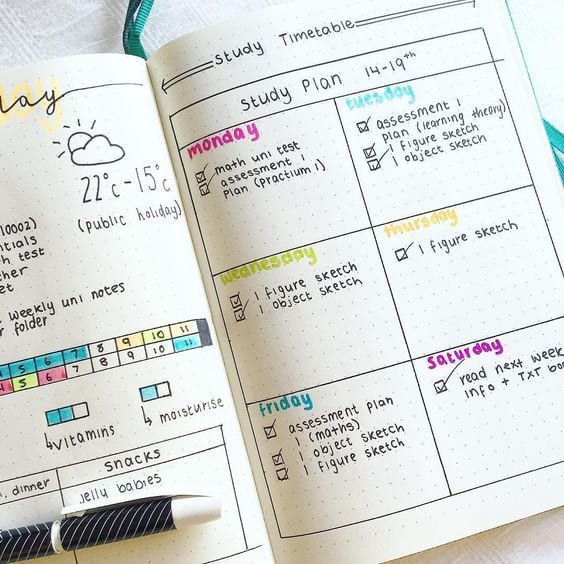This post is over three years old, the information may be outdated.
A bullet journal is a blank grid notebook where you have complete control over what you put on every page. Many people use calendars, daily logs and to-do lists as a basis for their journals. Other uses could be habit trackers, movie trackers or food and exercise logs.
Why the craze?
Bullet journaling is becoming popular because it gives you flexibility when organising your journal. There doesn’t have to be a set number of pages for each month or day – you can use each page for every new idea. It’s a great way to stay creative, improving your time management and organisation skills!
How to use it for study:
- Overall calendar: highlight or mark important dates from a yearly perspective or break it down into monthly or weekly calendars.
- Study log: keep track of how much work you are getting done during the week, with timetables or a timeline.
- To-do lists: easily prioritise your daily tasks. Add a daily log to be even more organised!
- Exercise and diet: including exercise logs, water intake and meal plans to monitor how healthy and active you are overall.
- Hobbies: list the books you’ve read or would like to read; use a ‘series tracker’ for seasons and episodes of a TV series. This will ensure you get ‘down time’ and not burn out!
What if I don’t have the time?
I use a normal day-to-day journal, but I create my own pages and stick them over pages that I don’t find useful, such as the international dates pages. This allows me to use the already established weekly diary spread, saving me time in making them myself. I just incorporate my own extras – timetable, class attendance, health and bucket list.
It also doesn’t have to be ‘neat’ like Instagram, those photos are very carefully prepared and organised! Just stick to bullet points and scribble rather than the well-planned colourful neat stuff. This will save you time, stop you procrastinating and still allow you to make effective use of the journal.
How do I start?
Buy a blank A5 art journal, a grid journal or an established daily journal like myself to alter as you please. There are many ideas on Pinterest and Instagram to inspire you. Everyone is different, so make sure you are creative in your own way!
Remember to have fun when making your journal. There is no need to stress about what you put in it or where it should go. It is all about the creativity, and helping you to stay organised in a more fun and interesting way!










